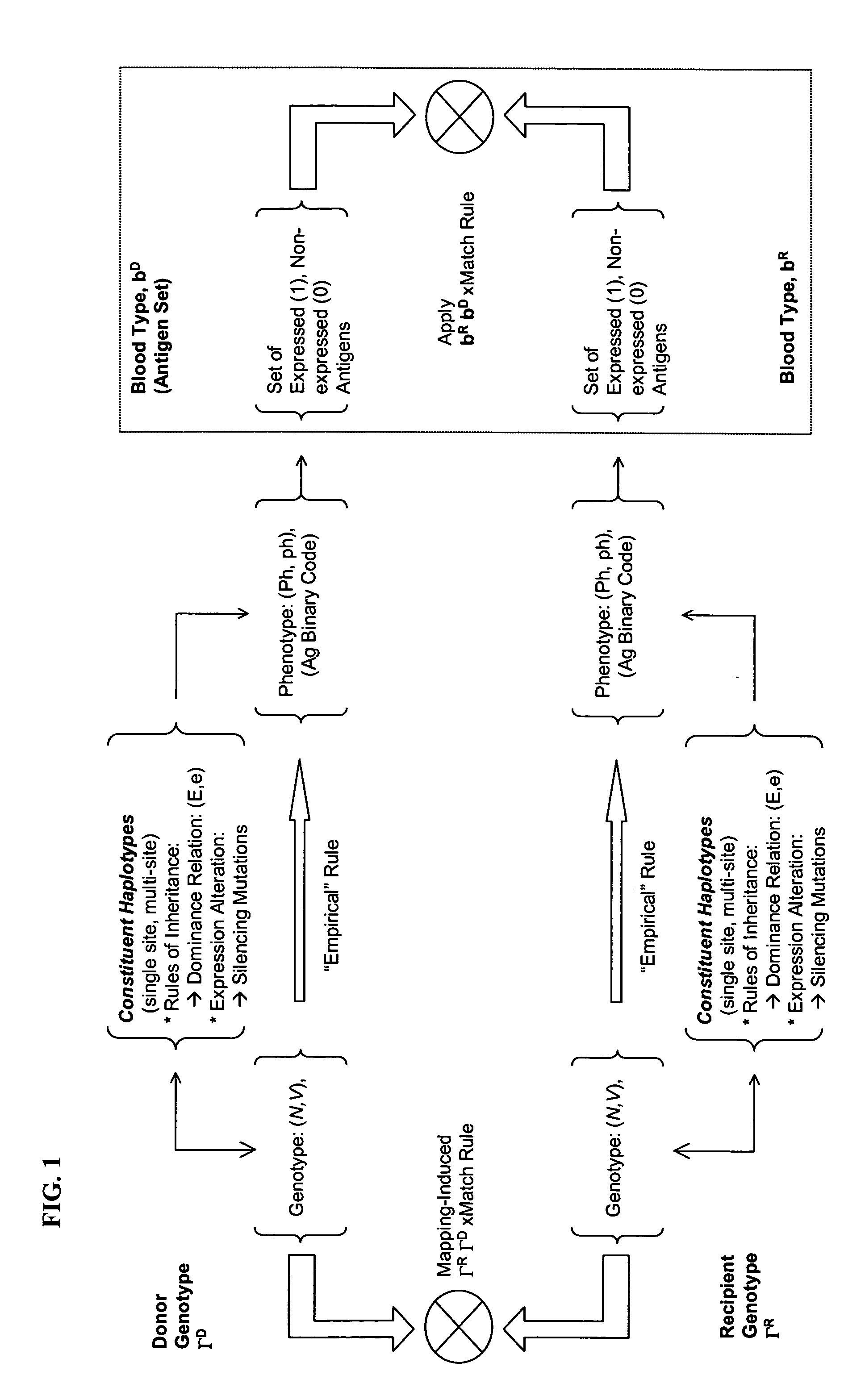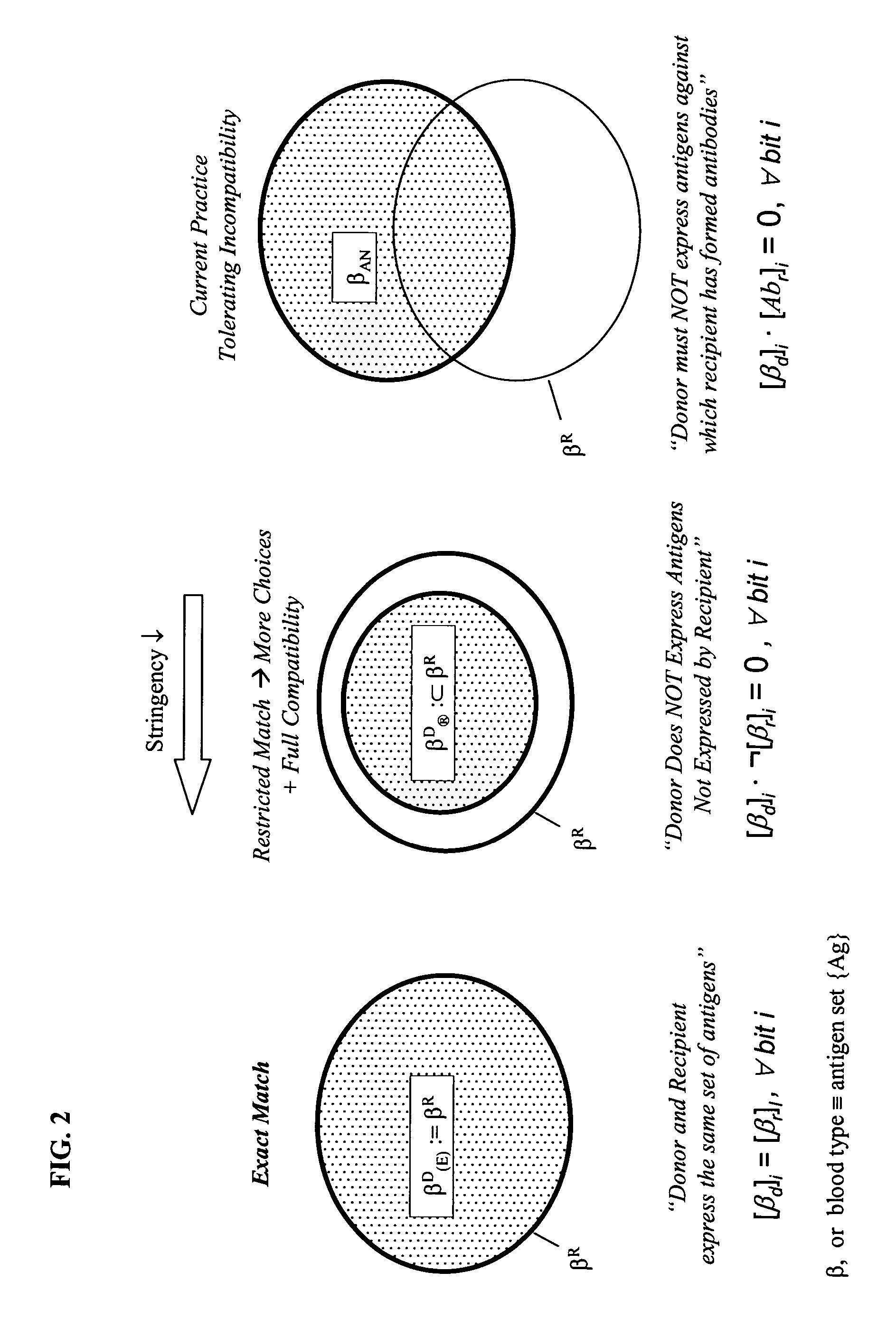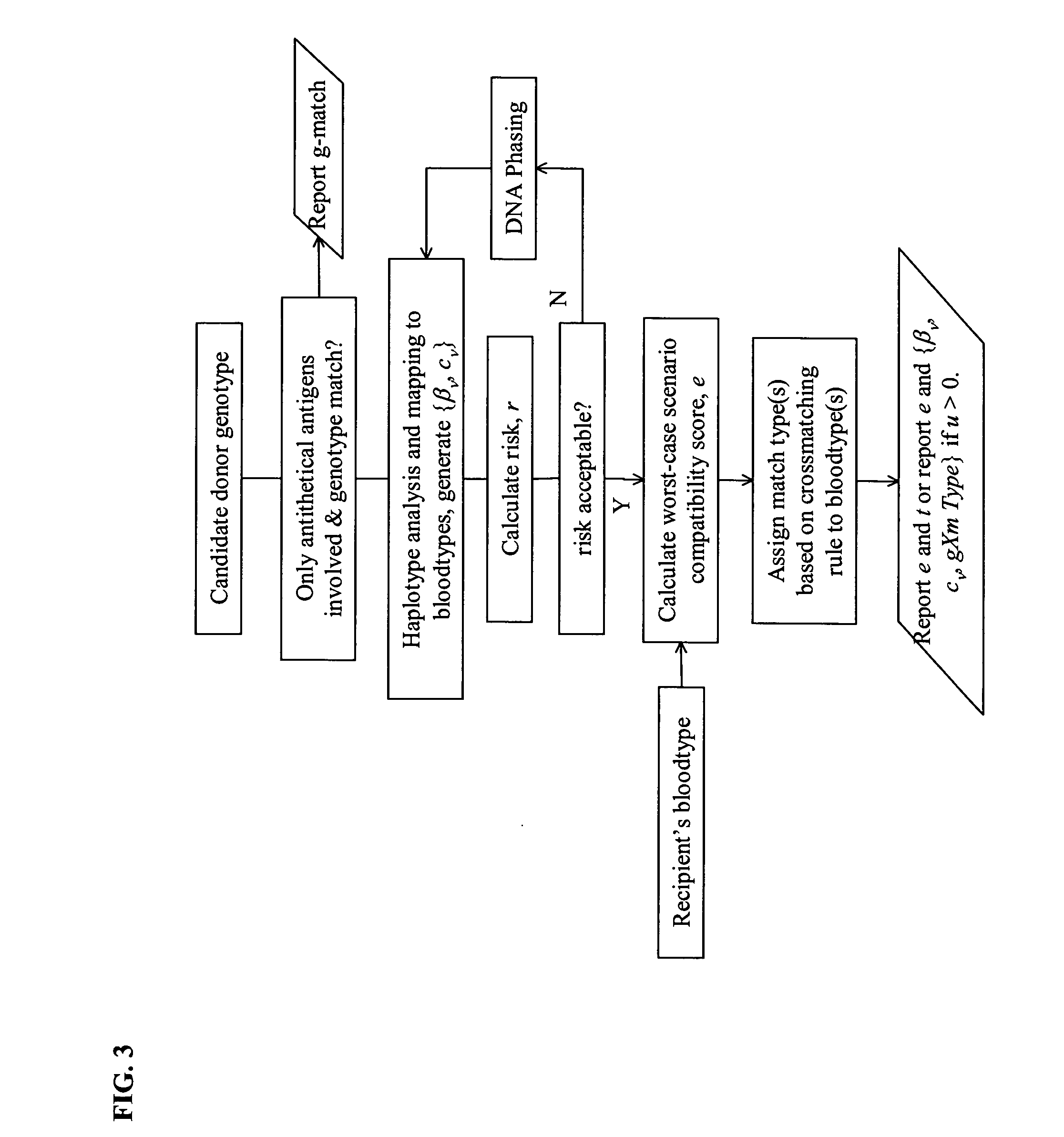Selection of Genotyped transfusion donors by cross-matching genotyped recipients
a transfusion donor and genotype technology, applied in the field of cross-matching of minor blood group antigens, can solve the problems of increasing the risk of patient morbidity, exacerbate emergency situations, and adverse effects to a clinically significant level, and achieve the effect of reducing ambiguity
- Summary
- Abstract
- Description
- Claims
- Application Information
AI Technical Summary
Benefits of technology
Problems solved by technology
Method used
Image
Examples
example 1
Exact and Relaxed Cross-Matching Rules
[0078] Consider a blood type defined as a combination of phenotypes (Fy(a−b+), Lu(a−b+), M+N+S−s+, K−k+, Jk(a+b−), Do(a−b+)). According to one reference (Reid, M. & Lomas-Francis, C., supra) and analysis by random combination, this phenotype occurs with an approximate frequency of 1.5% in African Americans. Table 6 shows compatible full-phenotypes according to exact- and relaxed-matching rules. Under the Exact Cross-Matching Rule, a donor will have a full-phenotype identical to that of the recipient's. Under Relaxed Cross-Matching Rule, one would expect a null phenotype, Fy(a−b−), to be compatible with a recipient bearing the phenotype Fy(a−b+), since an erythrocyte having neither Fya nor Fyb would display no potentially offending Duffy antigen to the recipient's immune system. The same reasoning applies to other markers. Thus, for instance, the combination—(Fy(a−b+), Lu(a−b+), M+N+S−s+, K−k+, Jk(a+b−), Do(a−b+)) would be considered a compatibl...
example 2
Genotype-to-Phenotype Mapping and Genotype Compatibility
[0079] This example illustrates the mapping of genotypes to phenotypes, and the combination of phenotypes into a blood type, followed by the application of cross-matching rules to phenotypes in order to derive sets of compatible genotypes. Genotypes, defined over a specific selection of 18 polymorphic loci relating to 26 phenotypes in Duffy, Lutheran, MNS, Kell, Kidd, Dombrock, Scianna, Diego, Colton, and Landsteiner-Wiener blood group systems, were identified using a panel of allele-specific probe pairs for 496 blood donors, stratified into several groups, as reported in Hashmi et al (supra).
[0080] 2A—Direct Transcription by Visual Inspection—The single nucleotide polymorphisms defining alleles in the selected panel, all but those in Dombrock and Duffy blood group systems, have a one-to-one genotype-to-phenotype mapping, permitting the combination of corresponding antigens to be “read off” from the genotypes. For example, at...
example 3
Reducing Ambiguity by Elimination: GATA-Duffy
[0085] Heterozygosity at two biallelic loci without resolution of the gametic phase, generally implies ambiguity. However, in certain situations, especially when the absence of Hardy Weinberg equilibrium suggests non-random sampling, it may be possible to resolve the ambiguity by inspection of the data. A case in point is the combination of FY-33, a silencing mutation in the GATA box of Duffy, and the marker at FY125, denoted FYA. / FYB. Table 10 shows genotype frequencies for the GATA mutation and FYA / FYB as observed in a set of 430 random donors of unspecified ethnic origin, in the aforementioned published data set (Hashmi et al., supra), Hardy-Weinberg Equilibrium testing (not shown here) suggests the donor population to be strongly stratified, precluding application of the EM algorithm. However, direct inspection provides the requisite insight. Thus, 2-locus biallelic combinations of {GATA, FY} yielding the observed genotypes are list...
PUM
| Property | Measurement | Unit |
|---|---|---|
| compatibility | aaaaa | aaaaa |
| frequency of | aaaaa | aaaaa |
| frequencies | aaaaa | aaaaa |
Abstract
Description
Claims
Application Information
 Login to View More
Login to View More - R&D
- Intellectual Property
- Life Sciences
- Materials
- Tech Scout
- Unparalleled Data Quality
- Higher Quality Content
- 60% Fewer Hallucinations
Browse by: Latest US Patents, China's latest patents, Technical Efficacy Thesaurus, Application Domain, Technology Topic, Popular Technical Reports.
© 2025 PatSnap. All rights reserved.Legal|Privacy policy|Modern Slavery Act Transparency Statement|Sitemap|About US| Contact US: help@patsnap.com



